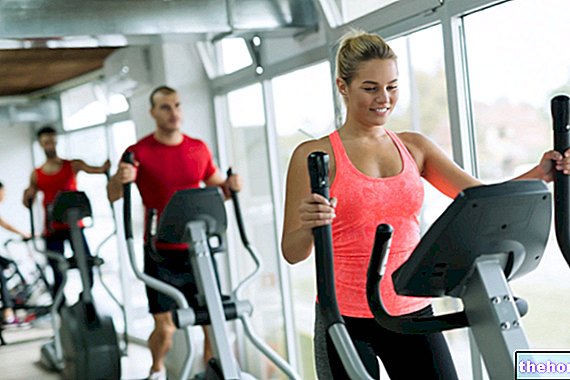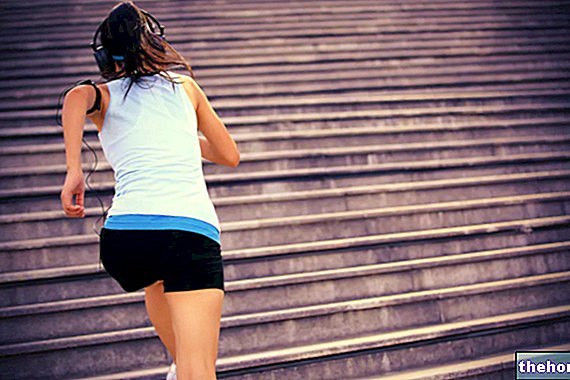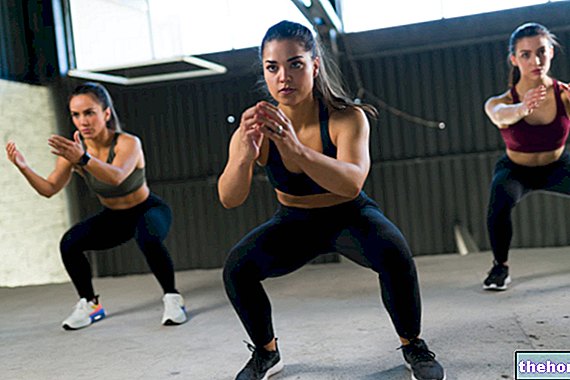By doing sports, many people make the mistake of concentrating only on the training phase, completely forgetting about pre and post session stretching, which is very important in order not to subject the muscles to excessive stress.
however, doing stretching exercises is essential, in order to avoid unpleasant consequences. Here are the most common.
Training your muscles can also help fight chronic inflammation.
Stretching can also be helpful in improving stiffness in the knees.
There are various types of stretching, one of them being active stretching
Stretching should also be done immediately after training. But there are other actions to take after training.
Posture problems
Not stretching regularly, especially before an exercise session, with the passage of time makes you more likely to assume a wrong posture, and in particular a hunched position, due to the force of gravity which, if you do not have the habit of stretching muscles, unconsciously causes them to curve forward.
Improper back alignment, if not corrected, can lead to problems such as low back and neck pain and hinder normal daily movements. As your posture gets progressively worse, even climbing a flight of stairs, sitting on a chair or reaching under the bed to grab something can become more difficult, especially as you get older.
Furthermore, body flexibility decreases more every year and stretching is one of the best ways to combat physical aging.
Increased likelihood of injury
The main reason flexibility decreases over time is that the percentage of water in the body becomes less and less as we age. Specifically, a lower concentration of water inside the muscles, ligaments and cells of the tendons can lead to injuries because when the latter are no longer very spongy their resistance to effort is lower. Since joint mobility also affects balance, people with tense muscles run a greater risk of falling, while those who stretch regularly show a significant improvement in balance. This is also confirmed by a 2018 study according to which having greater freedom of movement in the ankles improves balance, especially when you go up and down the stairs.
Also, neglecting stretching exercises before training can lead to injuries because a cold muscle fatigues faster and also puts the tendons and ligaments attached to it at risk of injury. Stretching in this phase also serves the body to warn the muscle that it will be put under stress.
To avoid pain and injuries such as bursitis or tendonitis, it is also very important to stretch after exercising, to allow the muscles to recover gradually and prevent them from transitioning from the movement phase to the rest phase too abruptly.
Worsening of sports performance
Greater flexibility can improve strength, endurance and overall sports performance. In fact, if the muscles are too tight, the body may not be able to activate the fibers necessary to perform fast movements, such as those of the hips during rapid sprints.
Muscles, in fact, work a bit like rubber bands and stretching them as much as possible gives them more energy to contract, greater strength, agility and faster reaction time.
Finally, stretching also improves circulation because doing stretching exercises brings more blood to the muscles, which is necessary to perform the movements in the best possible way.
Also try exercises to do in bed after sleeping badly.
functional to your flexibility, you can start with some basic exercises, identifying the muscles on which you intend to work more during the training phase and focusing on them. Over time, to get more benefits from this practice, you can begin to affect other parts of the body and make stretching a regular appointment within the fitness routine.
If motivation is lacking, a good way to push yourself can be to draw up a list of stretching goals, complete with exercises, repetitions, execution dates and any progress. It is important, in fact, to concretely realize the importance of stretching and the many improvements it can bring to the body, ranging from less pain to better balance and flexibility, up to more satisfying athletic performance.
of the hip resting on the floor.Acts on: back and back leg muscles.
Stretching of the buttocks
- From a standing position, place one leg in front of the other.
- Bend the front leg and stretch the back leg, keeping the hips well aligned and bringing the weight of the body onto the bent leg.
Acts on: buttocks and lower limbs.
Back stretch
- Using a mat, sit on your heels and stretch your arms forward towards the ground, so that your head rests in your arms.
- Maintain the position for a few seconds and return to the starting position.
Acts on: back muscles.
Back neck stretch
- Sit on the floor with your legs crossed.
- Cross your fingers behind your head and, without resting your chin on your chest, lower your head, stretching the back of the neck.




























